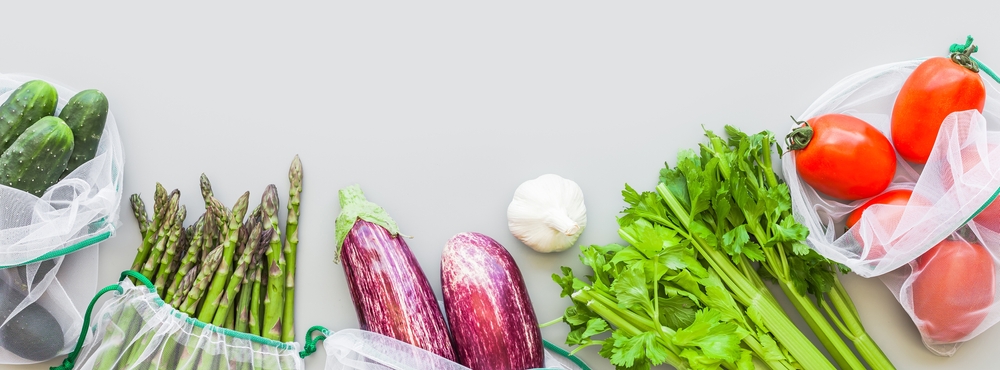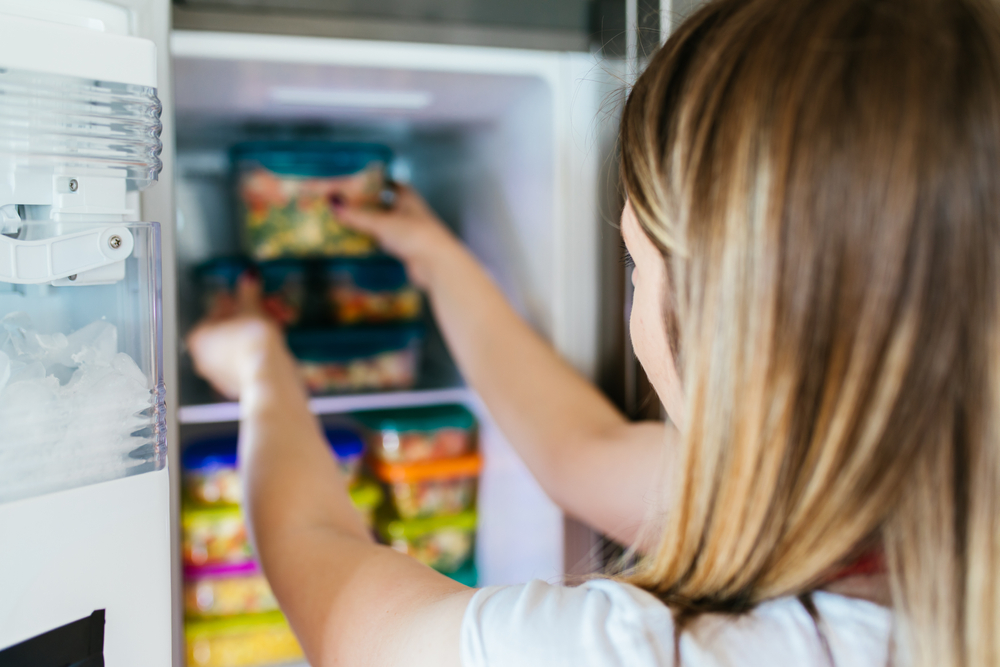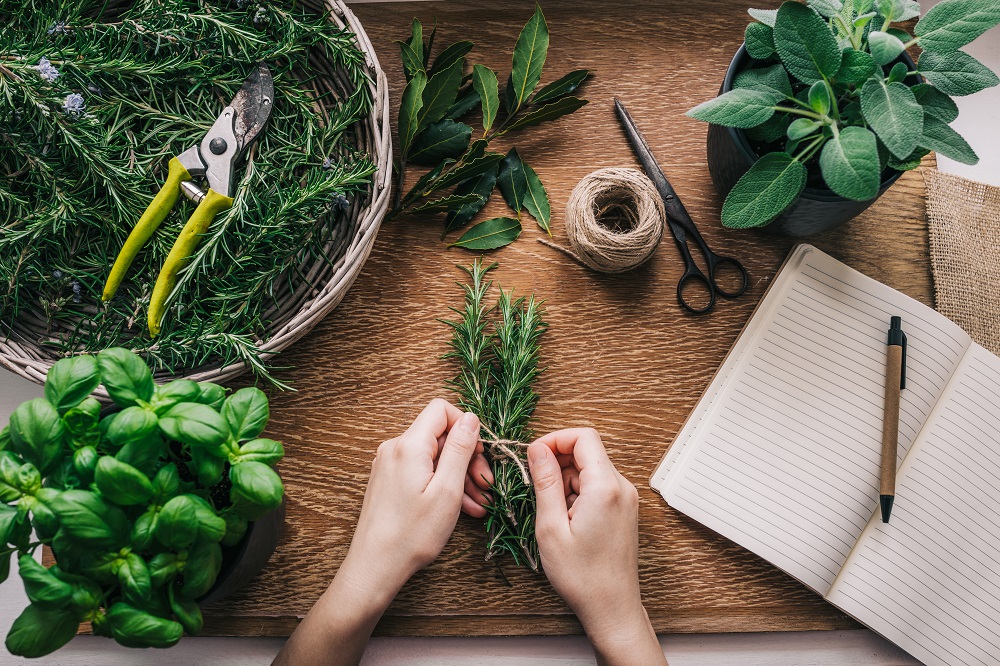Do you want to keep all your products fresh for longer?
Being able to carefully arrange your fridge is an art. Packing everything so that it stays as fresh as possible for as long as possible, as well as making sure you can see everything you have so that nothing is forgotten, can be a time-consuming task. However, it isn’t an impossible task, as long as you can get a bit organized and follow a few easy rules that you have to set for yourself. It all depends on how you like to store things when it comes to seeing everything in your fridge.
When it comes to keeping your produce fresh until you have to run to the store again, well, that’s a different story. There are so many smart tips and tricks online or even passed on to you from loved ones and acquaintances that it’s hard to know where to start. That’s where we come in to help you! Not only have we gathered the best tips for keeping your produce and herbs as fresh as possible for as long as possible, but we’ve also prepared some storage and packaging advice!
Let us know if you have implemented some of these already or if we convinced you to improve your fridge storage game!

#1 Confused? Put it in a bag!
If we look at the big picture, it isn’t a bad idea to just store your produce in a bag. After all, it happens to the best of us to end up with a lot of extra plastic bags when we forget to bring our own reusable ones to the store. And some supermarkets even make you put the product in a plastic bag before they weigh it, so why not reuse it? You can even just store it in the bag the produce came in if it’s already packaged.
But when you don’t know what to do, put the fresh produce in a plastic bag and then in the fridge. That way, the bag will prevent the product from losing moisture, and the stuff you see going limp will no longer have a reaction as fast as usual. This little trick also works for hard greens: simply remove the stems, place them in a bag or reusable container with a lid, and place them in the fridge!
#2 Ripe fruit? Refrigerate immediately!
Of course, some fruits aren’t made to be refrigerated immediately after you arrive home. Fresh fruits like pineapple, mangoes, and avocados may need a little bit more time at room temperature so they can ripen further. However, once they are ripe enough, or show signs of slowly approaching that ripe sweet spot, you must immediately place them in the fridge to slow down the ripening process!
With other ripe fruits, it’s best to store them in the fridge after you bring them home. However, keep in mind this is not an end-all-be-all solution: you have to eat them in a few days (maybe a week for certain fruits) after they are ripe because otherwise, they will go bad. especially if you washed them before storing them. This method buys you a few extra days when compared to storing them out in the open.
#3 Store them DRY!
A good rule of thumb is to keep your produce away from too much moisture, as it can produce mold or even turn your veggies mushy in the long run. Of course, some moisture is good because it prevents the product from wilting, but too much is a recipe for disaster. This is why you should aim to keep the produce as dry as possible when you go to store it, even more so if you have washed it before putting it in the fridge.
This is not a very set-in-stone rule, though! Some specific veggies and greens have other rules when it comes to moisture content, and some actually love water. If you want to make sure your scallions remain fresh and snappy, you should store them in water (roots-down and upright) at room temperature. This will let them continue to grow and stay fresh as long as you change their water from time to time!
Asparagus is like a bouquet of flowers, but you should store it in the fridge in a glass of water with the ends trimmed until you’re ready to use the second half of the bunch. Carrots and celery (especially the halved stalks) will thrive in a covered container with water as they will remain firm. Just make sure you change the water from time to time.

#4 Give your fresh produce some breathing room!
If you’re like most of us and like going to the grocery store once a week, then you know just how full the fridge is going to get with all your fresh produce. There is only so much fridge real estate to use, but you should never just try to cram everything in those crisp drawers just because you can.
Like people, fresh produce actually loves its personal space, and just shoving everything in the same drawer will just end up creating mold problems and make everything there go bad faster. This is why you should make sure there is enough air to circulate around all the produce, as that will ensure the moisture gets away and doesn’t get trapped to create mold.
Not to mention, giving everything space will also help you not forget about certain produce you can no longer see because it’s covered by others, which will let you both use everything you have efficiently but also help you not waste as much food.
#5 Know your fridge’s cold spots!
No matter how efficient and new your fridge is, there is a good chance that the top part of it will get colder faster than the rest of it (accidental freezing happens to everyone). Have you wondered why the drawers are always towards the bottom of the fridge? This is the exact reason.
Keep your most delicate fresh veggies and produce (such as lettuce, salad greens, and herbs) in the center or drawers to avoid eating accidentally frozen and thawed produce which just tastes horrible.

#6 Wrap up your fresh herbs!
You should think about the bundling and wrapping of your fresh herbs as a time for being gentle and even use it for relaxing; after all, you don’t want to bruise them. Remove any rubber bands or twist ties around your herbs, and give them a wash if they’re dirty. Otherwise, you should not wash them until you’re ready to use them, as excess moisture will favor the growth of mold or premature wilting.
If you need to dry them, either use a salad spinner or dry them between two clean dish towels, then wrap them in paper towels. In a resealable plastic bag or container, you should place your wrapped herbs and then place them in the fridge. You can add more types of herbs in the same container; just remember not to confuse them when you have to use them. Check on them from time to time and, if needed, replace the paper towel.
#7 Want to stop the ripening process of fresh produce? Freezer!
Have you accidentally bought too much produce? Do you not have time to use all of it, and you’re worried it will go bad if you leave it in the fridge for a few more days? Or are you worried you won’t get to use all the fruit? The best way to pause the ripening process is to put it in the freezer!
For the bigger fruits, once they’re ripe enough and have reached the stage you want, you can peel and cube the produce and then freeze them on a tray until they’re solid. After you can transfer them to a freezer-safe container, box, or plastic bag, you can keep them in the fridge for about 3 months before you have to toss them.
When we talk veggies, you should blanch them before you freeze them (and remember that not everything can be frozen). Herb-wise, you should chop them before wrapping them in paper towels or paper, and then add the whole bag to the freezer.
And if you’re wondering about the best way to use up your produce, here are some of our best recipes that are bound to inspire you!








